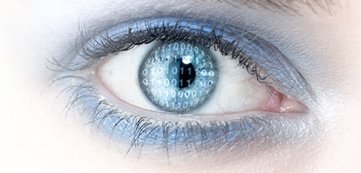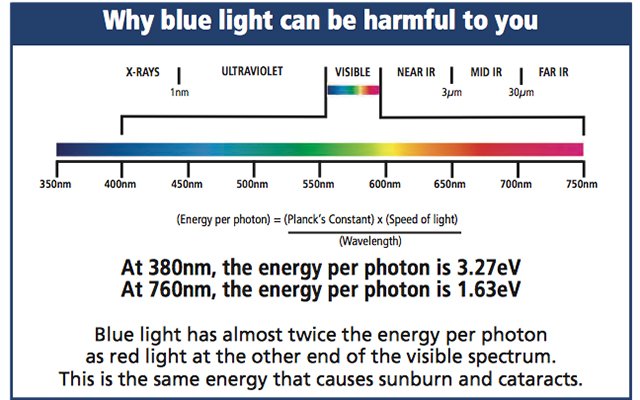
High Energy Blue Light Control
Addicted to your smartphone, tablet or computer? Worried about LED's? Concerned about the dangers of high energy blue light?

Are you constantly on your laptop and every other minute checking your phone or tablet? Not only that but do you sit inside under artificial light? We all know that light can be both harmful and beneficial for our vision as well as our overall health. After doing our research, here is what we can tell you about the effects of blue light.
Light is essential for various functions.
- It helps us to see better,
- It helps us with our visual acuity and contrast acuity,
- It helps us perceive colours,
- It helps with various non-visual functions of the body. For example, light helps to regulate our sleep/wake cycle, which in turn helps to maintain and regulate memory, mood and hormonal balance.
To put this into context, you need a basic grasp of the electromagnetic spectrum. It ranges from low-frequency waves such as radio waves (TV Signals) to micro-waves (mobile phones), infrared (cable TV) and visible light. It then moves to the more dangerous, high frequency end, from ultraviolet (sunbeds) to X-Rays and gamma radiation (which kills cancer cells).
Blue light and sunlight produce light at the same frequency range. Sunlight contains UV and blue light. UV light is part of the non-visible light spectrum and we are exposed to it every day when we're out in the sun. It can cause damage to our eyes, particularly the cornea and the lens. The cumulative effect of UV exposure can contribute to cataracts as well as the potential for pinguecula and pterygium. Blue light (blue violet) which comes from our smartphones and computers is part of the visible light spectrum, which reaches deeper into the eye and its cumulative effect can cause damage to the retina. Furthermore, in certain wavelengths, blue light is implicated in the development of age-related macular degeneration (AMD).
UV light affects the front of the eye (cataract formation), while blue light causes damage to the back of the eye (risk of AMD).
Nowadays, there's an increase in the use of digital devices and modern lighting—such as LED lights and compact fluorescent lamps (CFLs)—most of which emit a high level of blue light. CFLs contain about 25% of harmful blue light and LEDs contain about 35% of harmful blue light. Interestingly, the cooler the white LED, the higher the blue proportion. And by 2020, 90% of all of our light sources are estimated to be LED lighting.
Given that our eyes are exposed to various sources that emit this blue-violet light (e.g., the sun, LED lighting, CFLs) and combine that with the use of tablets, TVs, computer screens and smart phones, there's no doubt our exposure to blue-violet light is on the increase. This cumulative and constant exposure to the blue-violet light is going to accumulate over time and has the potential to cause damage to the retinal cells, which is going to slowly lead to retinal cell death and can in turn lead to AMD.
What is High Energy Visible Light?

HEVL is the shortest and highest energy violet-blue range from 380 - 500nm within the visible spectrum. It is also called 'high energy blue light' or simply 'blue light'. The most damaging part of the spectrum is from 380nm to 440nm which is a risk factor for the retina and associated with eye damage. This wavelength of light is not essential for sight and not necessary for a circadian rhythm response (Sleep-wake cycle or your internal clock) which is between 460nm and 480nm. Our Circadian rhythm is controlled by Melatonin release which is suppressed by blue light, keeping us awake. Important during the day but can be disruptive to our sleep rhythm at night.

Is Blue Light Damaging to your eyes?
Common sides effects to being sat in front of your computer, tablet etc.. are often headaches, eye strain/ discomfort, and eye fatigue. However, is Blue Light damaging to your eyes? Our governing body, 'The College of Optometrists', states the following:
'There is no reliable evidence to say that using devices emitting blue light causes any permanent damage to eyes or eyesight. However, it may make users with pre-existing vision defects more aware of them. Blue light sources encountered indoors are unlikely to approach unsafe exposure limits, even for extended viewing times, and the eye possesses natural defences to mitigate blue light damage.'
Advice when using smartphones and tablets.
- Set your device to auto brightness.
- Hold your tablet or smartphone at arm's length (or about 70cm) from your eyes.
- Make the font bigger to stop strain on the eyes.
- Only use the device for a couple of hours a day in one sitting. Then take a break and come back to it later.
In addition:
- Have your eyes tested regularly and take regular breaks from your computer and hand held device.
- Use good sunglasses with a UV filter when outside.
- Have a healthy and varied diet rich in Vitamin A, lutein, zeaxanthin and mesozeaxanthin which comes from spinach and peppers which will protect the eyes.
5 Exercise tips for maintaining strong, healthy vision
1. Computer users should take regular screen breaks, ideally every 30 minutes. During breaks, look to the distance or close your eyes for a few seconds in order to rest them.
2. People often find their eyes dry out because they blink less at a computer. To avoid this, try blinking every time you hit the return key.
3. The glands in our eyes can sometimes get blocked, which can contribute to dry eyes. To reduce this, cover your eyes with a hot flannel for a few minutes and then massage along the eye lids. Try to do this daily. Taking supplements such as good quality omega 3 oils can also help to improve tear function.
4. Some people find focusing on close-up tasks difficult. This may be due to slight weaknesses in our convergence eye muscles. Hold a pen around 40cm from your nose, then slowly move it closer until you can see it double. Do this three to four times then close your eyes for a few minutes or look in the distance to rest your eyes. Try to do this exercise little and often.
5. Hold some small text around 10-20cm away. It could be the page of a book or a food label, just make sure you can read it clearly. Then look at some text in the distance, maybe on a sign or the text/subtitles on the TV. Read one line of text close to you and then a line of text in the distance. Repeat this five to ten times. Once you have completed the exercise, rest your eyes for a few minutes by shutting them or looking in the distance.

What eyewear can help reduce the side effects of LED/ blue light when sat in front of a computer?
Blocking out the blue light with blue lens filters neutralises the blue light emitted which can help reduce eye fatigue, eye strain and even sleeplessness. It can help keep your eyes in better condition, offering more comfortable and relaxed vision and a better contrast perception when using everyday digital devises.
What prescription filters can help and what we recommend for indoor use?
Such filters vary in colour from yellow to red, depending on the amount of absorption required. We can offer a number of specialist lenses from our protective lense series (PLS). When you place your prescription order consider including one of the following tints:
1. Blue light control coating for clear lenses - Blue Block
We have introduced a range of prescription packages that include a Blue filter in additon to our 'Crystal Clear coatings. We call it Blue Block. Due to the blocking process the lenses develop a light yellow tinge which is not noticeable in most light conditions. It blocks most of the harmful blue light up to 430nm which is the most harmful part of the spectrum and blocks around 30% of the remainder. They are ideal for:
- Stay-at-home parents (smartphones, tablets, laptops)
- Students (smartphones, TVs, laptops)
- Gamers (TVs, flat screen computers)
- Young professionals (laptops, smartphones, tablets, GPS)
- Kids/teenagers (TVs, smartphones, tablets)
- Office workers (flat screen computers)
- Pensioners (TVs, flat screen computers, tablets, laptops)
Key benefits include:
- Reduces blue light that reaches the eyes day and night
- Enhances contrast for visual comfort and sharper vision
- Helps protect against accumulated potential harmful affects of HEBL (High Energy Blue Light)
- Reduces glare and reflections
2. PLS (UV) 450 - Yellow 86%
Yellow lens absorbing up to 450nm is a light comfort tint. With a light transmission of 86% this lens is almost clear. It has also passed the traffic light recognition test and is ideal for people who:
- do a lot of reading and watching television
- spend a lot of time on mobile phones, tablets and computers.
- work under fluorescent lighting in offices and supermarkets.
3. PLS 410 - Rose 50%
Rose lens absorbing up to 600 nm is a stronger tint and should be considered for the following:
- fluorescent lighting
- light flicker
- eye strain
- tension headache
- photophobia - blepharospasm
4. Polarised Melanin Lenses
For outdoor use, these lenses absorb up to 600nm and helps to reduce the probable damage that contributes to age-related macular degeneration (AMD) and cataracts. For more information on Melanin Lenses click here.
If required, click on'Add To Basket' icon with the'Add Prescription' highlighted and follow the steps on the left to select the 'Sports Perormance Lenses - Polarised Melanin' prescription package.
- Ordering Prescriptions
- Lens Options Explained
- About Glasses
- About Sunglasses
- About the Eyewear Brands
- Eyecare
- Eye Conditions
- Frequently Asked Questions
- Blog
- About Us
- Why Choose Eyekit for your Prescription?
- Varifocal Prescriptions
- Tint Colour Options for Prescription Lenses
- Special Offers
- Guide to Buying Eyewear Online at Eyekit
- Choosing Eyewear for Sport
Latest From Eyekit
Rain Rain Go Away- Why you need a Crystal Vision Coating on your Prescription Glasses and Sunglasses
The snow was short lived but us Brits know that the Winter/ Spring showers have just begun. You know how it starts, you get out your bike or you figure out your hike for the day on the map and
Veganuary - Can Excluding Animal Products Have an Impact on Your Eyesight?
We often make connections between diet and cardiovascular disease or obesity but we often forget that eye sight and vision loss is also linked to...
Our top 5 Eyewear items to Help Your Eyes this Lock Down
We have looked at our top 5 most popular Eyewear items that people needed during the last lockdown that could help you with this...
Winter Is Here
Here's how you can help out your eyes this winter. THE SUN HAS GOT HIS HAT ON- even in winter You might only think you need your sunnies...
Driving Home for Christmas
For most of us we have been spent the year being unable to visit our families. So for those of us who are able to go home for Christmas/ share...








